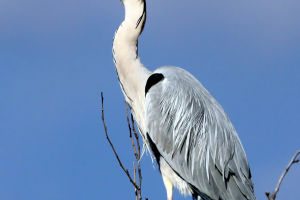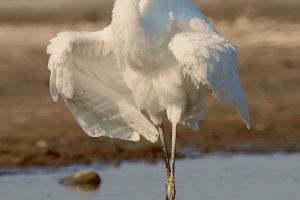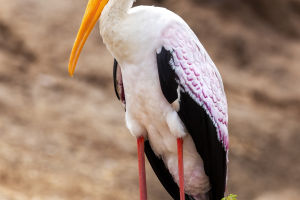Domestic geese and swans are two distinct species of birds, each exhibiting prominent disparities in their appearance, behavior, and natural habitats.
In this article, we will provide a comprehensive overview of the distinctions between these avian species to enhance the readers' comprehension.
Differences in Appearance:
Size: Swans are generally larger than domestic geese. They rank among the world's largest birds, boasting wingspans of up to 2.4 meters, whereas domestic geese are typically smaller, with wingspans around 1.2 meters.
Color: Swans predominantly feature white plumage, especially in males, although certain swan species may exhibit light gray plumage. Domestic geese, on the other hand, display a broader range of colors, including white, gray, black, or combinations thereof.
Neck Length: Swans possess remarkably long necks characterized by elegant S-shaped curves. Domestic geese, in contrast, have shorter necks that are generally straight or slightly curved.
Bill: Swans typically sport long and prominently protruding bills, which are either orange or black. The bills of domestic geese, conversely, are comparatively shorter, with shades ranging from orange to pink, and are less conspicuous than those of swans.
Feet: Swan feet are notably long and come in colors such as black or orange, designed for efficient movement through water. Domestic geese possess relatively shorter feet and exhibit a variety of colors, depending on the specific species.
Differences in Living Habits:
Habitat: Swans predominantly inhabit open bodies of water, including large lakes, rivers, and coastal areas, while domestic geese tend to congregate near farm ponds, lakes, and rivers.
Feeding Habits: Swans primarily subsist on aquatic plants, plankton, and waterborne vegetation, often diving underwater to forage. Domestic geese also consume aquatic plants and grasses but are more inclined to feed on land, frequently pecking at grassy vegetation.
Flight Behavior: Swans are robust fliers capable of undertaking long-distance migrations. Conversely, domestic geese, while possessing flight capability, typically engage in shorter flights and spend more time traversing on land.
Group Structure: Swans often form family units consisting of a pair of adult swans and their offspring. Domestic geese, however, tend to congregate in larger groups, and it's not uncommon to observe sizable gatherings of domestic geese foraging together on farms or lakeshores.
Vocalization: Swans are renowned for their resonant calls, capable of producing various neighs and trumpets. Domestic geese, by comparison, produce relatively mellower sounds, usually manifesting as quacks, which lack the clamor associated with swan calls.
Differences in Reproductive Behavior:
Nesting Site: Swans typically establish nests close to or directly on the water, creating relatively spacious nests constructed from aquatic plants and other vegetation. Domestic geese, conversely, usually opt for terrestrial nesting sites, constructing smaller nests comprised of weeds and feathers.
Incubation Period: Swans undergo extended incubation periods, lasting several weeks. In contrast, domestic geese experience relatively shorter incubation periods, typically ranging from a few days to a week.
Parental Care: Swans tend to exhibit more prolonged parental care, looking after their goslings for several months. On the other hand, domestic goose chicks grow rapidly and are often self-sufficient within a few weeks.
In conclusion, domestic geese and swans exhibit numerous disparities in terms of appearance, behavior, and breeding habits. These distinctions underscore their unique roles within diverse ecosystems.


